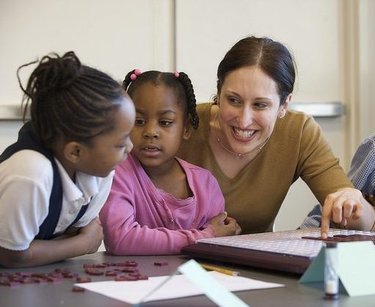Carey Institute program will instruct teachers on educating refugees
RENSSELAERVILLE — Schooling young refugees who have come to the United States involves more than teaching them English; teachers must also be able to help students who have suffered trauma and dislocation.
The Carey Institute for Global Good, in Rensselaerville, has launched a pilot program to train teachers of refugees.
In 2018, almost 90-percent of all refugees in New York State settled upstate, according to the state’s Office of Temporary and Disability Assistance. Of the 1,281 refugees who arrived in the state last year, 155 came to Albany County.
Meanwhile, the United Nations Refugee Agency has reported that 4 million of the 7.4 million school-age refugees who are in its care — more than half — are unable to attend school.
The New York State School Boards Association has also found that school districts statewide are struggling to find instructors who teach English as a new language since the number of children that speak other languages is increasing.
Dr. Diana Woolis, the director of the Center for Learning in Practice at the Carey Institute for Global Good, said that the institute has been trying to resolve the shortage in teachers for refugees. Almost every school in the United States has at least one “newcomer” in it, and one in 200 children in the world is a refugee, she said. But educators for these refugee children are lacking in the proper training to teach them.
“They feel that they’re not adequately equipped to be effective teachers for these students who suffer from trauma, violence, dislocation,” she said.
The Refugee Educator Academy was launched in 2017, offering courses online at learning.careyinstitute.org. This year, a pilot program is being launched for the course Refugee Educator Foundations of Practice. The course will run for three years in New York, Arizona, and Washington, with participants offering feedback on the program.
Around 120 teachers are expected to participate in the 12-week online course, according to Sang-yeon Lee, program assistant at the Center for Learning in Practice, who said that New York, Arizona, and Washington are among the 10 states receiving the most refugees. Eventually, all teachers in the United States will be able to participate as well as teachers in the Middle East, Europe, and Africa, said Woolis.
Forty teachers from New York State will participate in the pilot program’s first 12-week session. In total, 300 teachers will participate over the course of the program, said Woolis.
Some of the courses are designed by Woolis; others are designed by the academy’s program manager, Julie Kasper; by guest instructors; or through partnerships with other organizations, such as with a non-governmental organization in Egypt for teachers of Syrian refugees.
Lessons in the pilot program address teaching students who are second-language- , or even third- or fourth-language-learners. Lessons will be given on teaching a “trauma-informed curriculum,” which Woolis said would be applicable to any students, not just refugees, who have experienced trauma. Lessons will also address acculturation, resettlement, and social isolation that refugee students may experience, she said.
“They have a set of what we might call ‘four core stressors … ,’” she said of refugee students, referring to language learning, acculturation, resettlement, and isolation. “In each of these cases, there are a set of tools and methods that can be used in the classroom with the students and with the parents to address those stressors.”
While the lessons in the pilot program will be primarily online, some face-to-face meetings will take place in each of the states with the program’s course facilitators, said Woolis.
Lessons will be applicable to all students although much of what is being addressed is trauma that has been experienced by displaced students, Woolis said.
The program was certified on March 29 by the State Education Department as a Continuing Teacher and Leader Education, or CTLE, provider, said Lee. This means that teachers can meet their required 100 hours of CTLE training to be registered to teach in a public school. The program will remain certified for five years.
University credits will not be offered in the pilot program, but the goal is to eventually increase participation in the following program, said Woolis.



